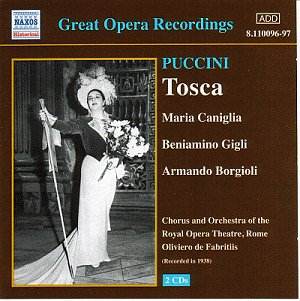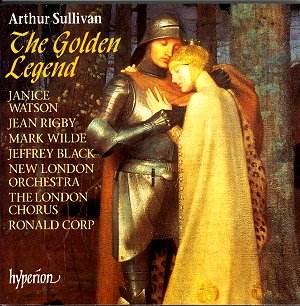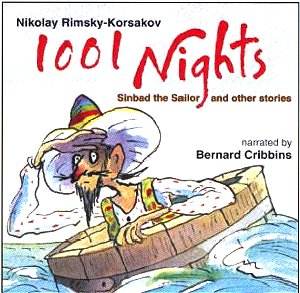 Composer: Giacomo Puccini
Composer: Giacomo Puccini
Works: Tosca
Performers: Maria Caniglia (Tosca), Beniamino Gigli (Cavaradossi), Armando Borgioli (Scarpia), Ernesto Dominici (Angelotti), Giulio Tomei (Sacristan), Nino Mazzioti (Spoletta), Chorus and Orchestra of the Teatro Reale dell’Opera, Rome
Recording: Recorded in Rome, September 1938
Label: NAXOS HISTORICAL 8.110096-97 [2 discs, 78.23, 75.14] Mono ADD
Giacomo Puccini’s “Tosca” remains a pillar of the operatic canon, a vivid tapestry of love, betrayal, and political intrigue set against the backdrop of Napoleonic Rome. The 1938 recording featuring Beniamino Gigli as Cavaradossi and Maria Caniglia as Tosca provides a fascinating glimpse into the interpretative practices of the era, well before the post-war evolution of vocal technique and recording technology transformed the operatic landscape. Gigli, often heralded as the natural successor to the legendary Caruso, commands this performance, showcasing an artistry that balances lyrical beauty with dramatic urgency.
One cannot overlook the sheer brilliance of Gigli’s tenor, which, in this recording, resonates with a richness that is as captivating as it is versatile. His interpretation of “Recondita armonia” is particularly noteworthy; the way he navigates the soaring lines is thrilling, evoking both passion and introspection. Unlike many modern interpreters who might prioritize emotional rawness, Gigli’s approach retains a sense of Italianate elegance that feels authentic to the verismo tradition. His ability to infuse warmth and humanity into the character of Cavaradossi adds layers of complexity, making his eventual fate all the more poignant.
Maria Caniglia’s portrayal of Tosca, while lacking the darker allure of Leontyne Price or the visceral intensity of Maria Callas, offers a compelling interpretation grounded in sincerity. Caniglia’s “Vissi d’arte” captures the character’s emotional vulnerability, though it occasionally veers into a forceful delivery that detracts from the lyrical subtleties of the aria. The contrast between her vocal timbre and Gigli’s rich tenor serves as a reminder of the era’s stylistic choices—where emotional expression often took precedence over the more nuanced vocal technique that would come to define later performances.
The orchestral playing, under Oliviero de Fabritiis, is decidedly workmanlike. The initial orchestral introduction suffers from a lack of clarity, with the brass and woodwinds obscured by the recording’s inherent limitations. Yet, as the performance progresses, the orchestral balance improves, allowing the drama to unfold more convincingly. The recording’s technical quality, while certainly a product of its time, allows for the singers to be prominently featured, albeit often at the expense of the orchestra’s intricate textures. This imbalance is typical of historical recordings, yet it is a critical factor in how one engages with the music.
The inclusion of highlights from a French-language version of “Tosca” recorded in Paris in 1931, featuring Ninon Vallin, offers an additional layer of historical context. However, this segment pales in comparison to the primary performance, suffering from poorer sound quality and less compelling vocal portrayals. The comparison underscores the dominance of Gigli’s performance, where his emotional range and technical prowess shine brilliantly against a backdrop of lesser interpretations.
This Naxos Historical re-issue provides invaluable insights into the performances of the late 1930s. While it may not rival the modern standards set by conductors like Karajan or singers like Callas, it stands as a testament to the rich tradition of Italian opera. The recording captures a moment in time when the operatic voice was celebrated for its natural beauty and emotional depth, making it a worthwhile acquisition for both enthusiasts and scholars of Puccini’s work. The legacy of Gigli, in particular, is evident, echoing in the halls of opera houses long after his voice has faded, reminding us of a golden era of Italian tenor singing.



